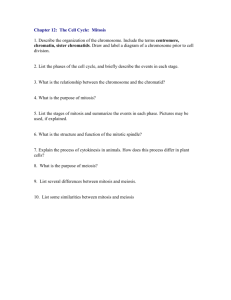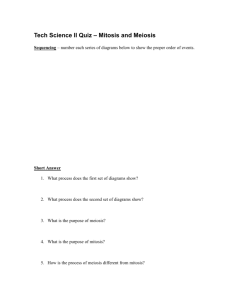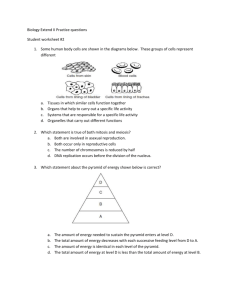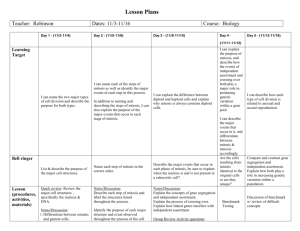AP Bio Study Guide
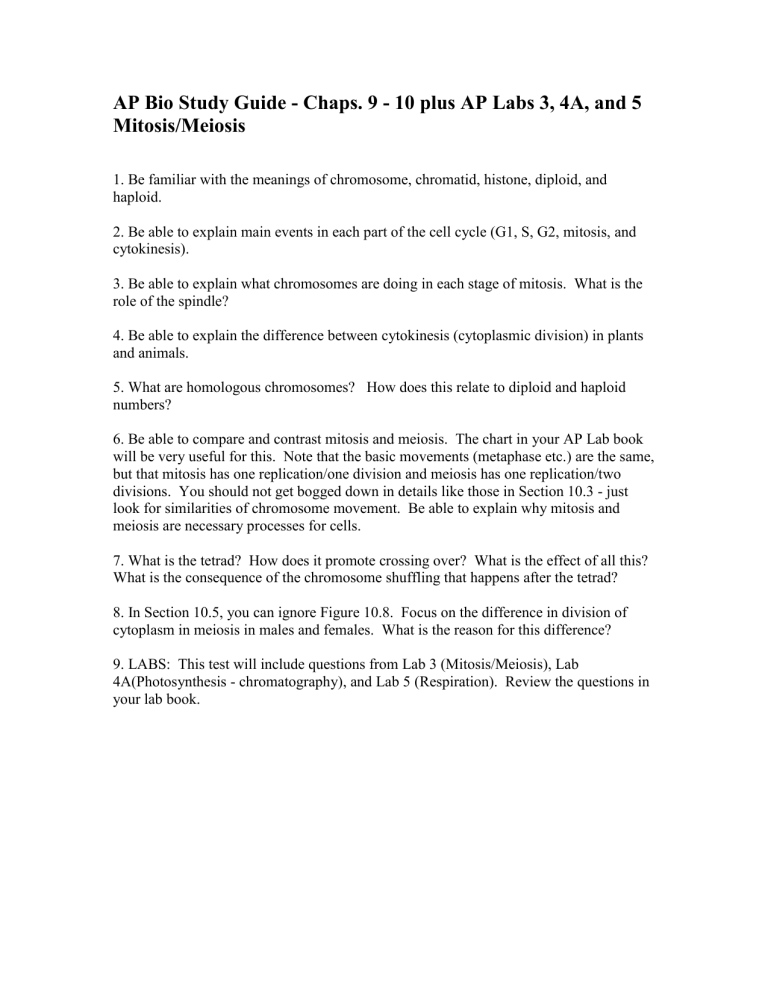
AP Bio Study Guide - Chaps. 9 - 10 plus AP Labs 3, 4A, and 5
Mitosis/Meiosis
1. Be familiar with the meanings of chromosome, chromatid, histone, diploid, and haploid.
2. Be able to explain main events in each part of the cell cycle (G1, S, G2, mitosis, and cytokinesis).
3. Be able to explain what chromosomes are doing in each stage of mitosis. What is the role of the spindle?
4. Be able to explain the difference between cytokinesis (cytoplasmic division) in plants and animals.
5. What are homologous chromosomes? How does this relate to diploid and haploid numbers?
6. Be able to compare and contrast mitosis and meiosis. The chart in your AP Lab book will be very useful for this. Note that the basic movements (metaphase etc.) are the same, but that mitosis has one replication/one division and meiosis has one replication/two divisions. You should not get bogged down in details like those in Section 10.3 - just look for similarities of chromosome movement. Be able to explain why mitosis and meiosis are necessary processes for cells.
7. What is the tetrad? How does it promote crossing over? What is the effect of all this?
What is the consequence of the chromosome shuffling that happens after the tetrad?
8. In Section 10.5, you can ignore Figure 10.8. Focus on the difference in division of cytoplasm in meiosis in males and females. What is the reason for this difference?
9. LABS: This test will include questions from Lab 3 (Mitosis/Meiosis), Lab
4A(Photosynthesis - chromatography), and Lab 5 (Respiration). Review the questions in your lab book.



